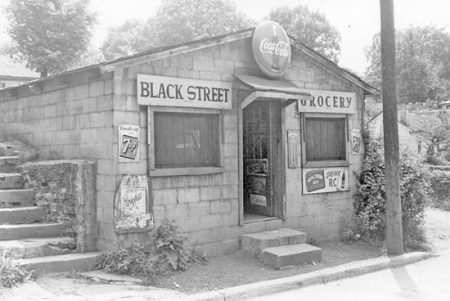A History Intertwined

By Johnnie Grant –
How does a community move forward with racial histories that are so intertwined?
In our current progressive dispensation of life, dreams that race might someday become an insignificant category in our lives are naively utopian; no well-informed person can deny this fact.
With all the discussions of and around racial relationships, on a philosophical basis we all see through different lenses. As for Asheville, there is no exception when it comes to race: black people and white people, WNC natives and newcomers, retirees and millennials—all have different perceptions of the culture we share.
So how do we all move forward in ways that are significant? Many people discuss the issues of race as a continuum, and set out to work through it. In the matter of its fundamental importance to our history, means and methods of working through racial issues have haunted us for over 150 years.
Is there a right or wrong way to resolve racial differences? What is amenable for all? Many scholars argue that slavery actually created racism, in part by sanctioning official and artificial categories of Black and White. They assert that racism—the deliberate use by one group to wield power over another group, based on ethnic origins and racial categorization—was created, in large part, to justify slavery.
During the establishment of slavery, religious justifications for enslavement were also used. But as slaves converted to Christianity, a new justification was needed, and purely racial categorizations were ready at hand.
Today in America one of every eight people of African heritage is descended from slaves, so the significance of history for Africans in America at the end of slavery was just the beginning of a quest for future equality.
Asheville’s history is also interwoven with that African American presence. In the city of Asheville and throughout Buncombe County exists a tapestry of African descent that has woven intricate threads of history—more than one could ever imagine.
Within that tapestry, no one was more notable in the State of North Carolina and Asheville than Zebulon Baird Vance. Vance held some of the highest government offices in the land. He served as Buncombe County Solicitor, a member of the NC House of Commons, a U.S. Congressman, Captain of the “Rough and Ready Guards,” a Colonel in the 26th North Carolina Regiment, Governor of North Carolina, and a U.S. Senator. Yet despite Vance’s notable accolades, nothing is more salient to people of African descent than his holdings of enslaved African peoples in Buncombe County.
For 117 years the Vance Monument has towered over Pack Square, watching over the epicenter of a bustling downtown. If the Vance monument could tell the stories of the city and of the peoples who have lived in its shadow for more than a century, perhaps the intertwined history of blacks and whites, of slaves and slave owners—a history that can still be felt today—could be explored and reconciled.
Recently, a campaign called “From Slavery to Freedom” was formed to promote and lobby for inclusion of that history on Pack Square, where the Vance Monument stands. Local activists and supporters of African American history made their sentiments known and their voices heard as they advocated for a monument recognizing the contributions by generations of African Americans to this city; they called for one or more monuments to be placed in the prominent Pack Square area, as well as other parts of town.
Dr. Darin Waters, Assistant Professor of History at UNC Asheville, stated, “Some prefer to forget this history, especially since it does not fit comfortably into the traditional narrative of American history. Yet to face these atrocities is tragic and painful: the enslavement of my ancestors was nothing but tragic. Inevitably, we must face this history because it is through the voices of our forebears, muzzled by the chains of human bondage, that history is heard, and reverentially honored by all Americans. It is an ongoing and triumphant march toward the ideals that we say define us as a nation.”
Deborah Miles, Executive Director for the Center of Diversity Education, noted, “Researchers at UNC have studied cultural socialization for African American among elementary students. Their findings were that the more a 5th-grader knew about family heritage and community stories, the higher their self-esteem and academic achievement is before they reach the 7th grade.
“What local stories do we tell from 1860, 1960, or 2015 about Asheville to build power and pride for African American young people? There is nothing at that square of power that says anything about the history of local African Americans, or the story of the Civil Rights movement. Instead there are three Confederate monuments.
“Our children are being denied the power of these stories. That denial affects generations of academic achievement. Narrative, story, heritage is directly connected to [determining] who feels they have the power to act on their own behalf, and on behalf of the community.”
Dr. Waters closed by stating, “This is the very space where enslaved African Americans were bought and sold. During their lifetime, they labored to build this city, county, state, and nation; doing so while the masters, and the members of the race from which the masters came, debated their humanity. If we choose to ignore this history we only perpetuate the undeniable self-delusion that led the nation to war 150 years ago.”








